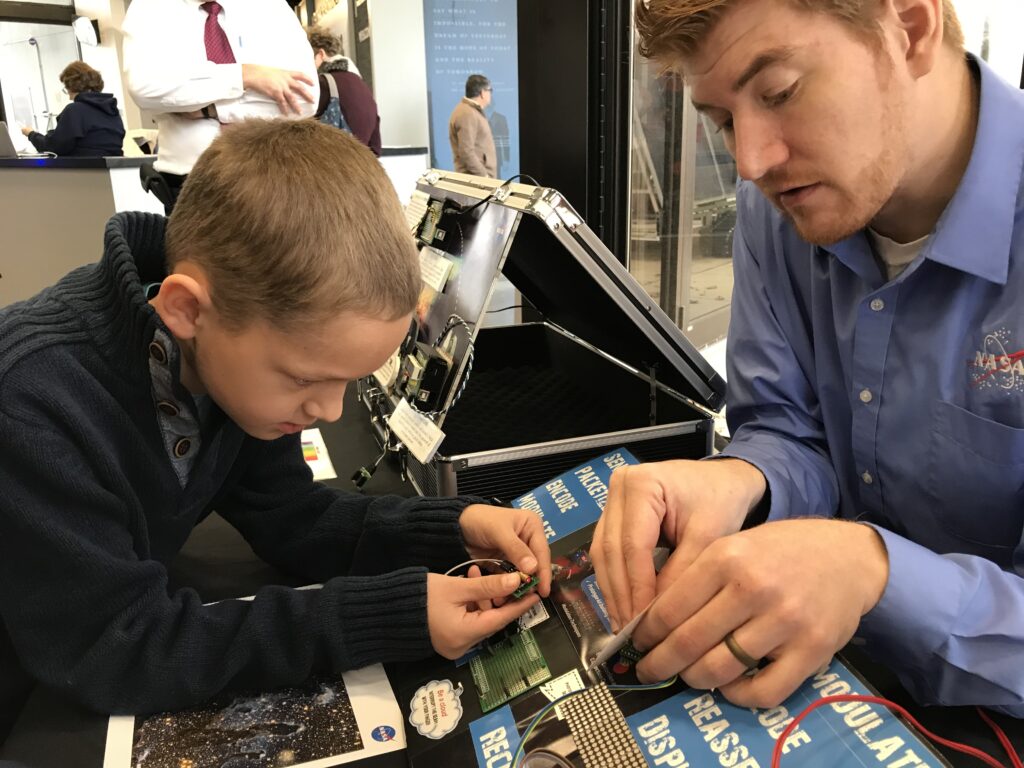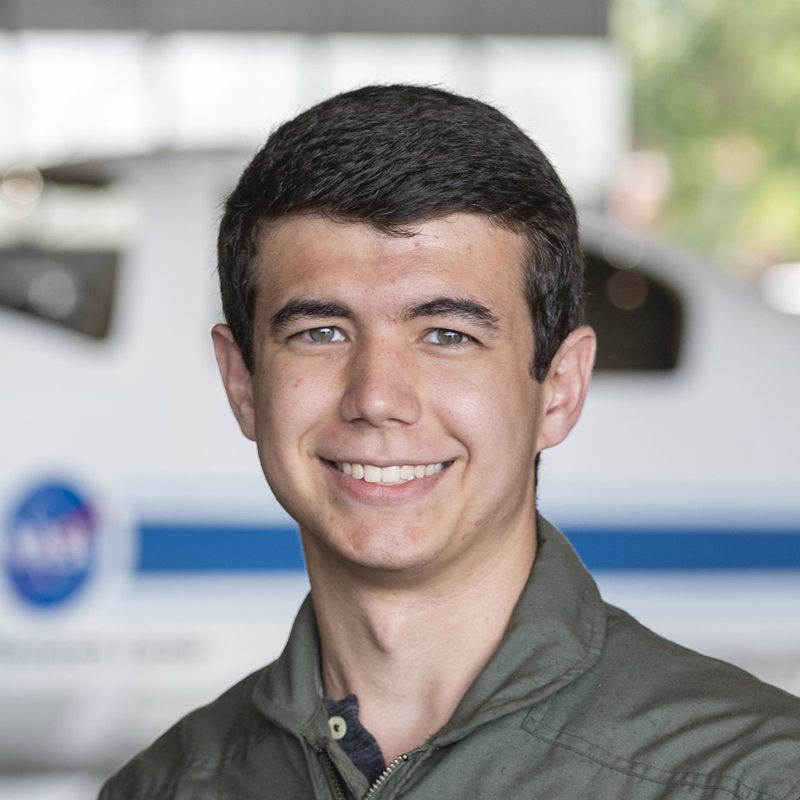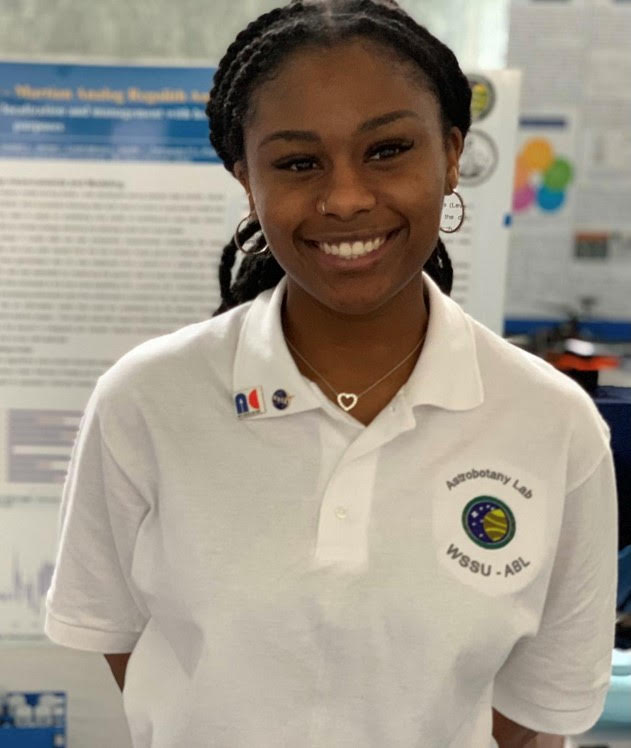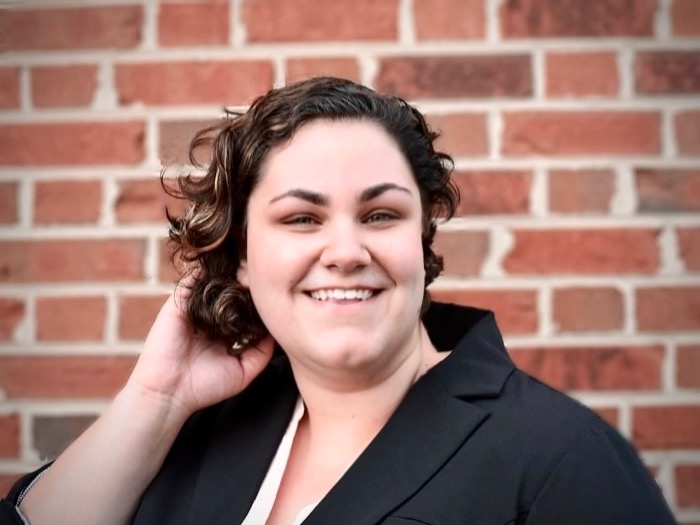Session 2: Student Lightning Talks
Moderator

Jimmy Acevedo, Senior Educational Outreach and STEM Engagement Specialist,
NASA Goddard Space Flight Center
Jimmy Acevedo is a three-time Goddard intern who started his journey to NASA through student high-altitude ballooning teams funded by North Carolina Space Grant. His diverse background in video game development, K-12 education and NASA engineering informs the design of the physics-focused outreach activities he designs for students. He manages an intern program for the Exploration and Space Communications projects division, out of Goddard Space Flight Center, and takes every opportunity to tinker with electronics, educational toys or interestingly shaped scrap metal.
Speakers

Travis Newton, graduate student, North Carolina State, NASA DEVELOP Internship Award – Summer 2020
Mapping Forest Composition and Health in the Southern Appalachians Using NASA Earth Observations to Enhance Drought and Watershed Health-Related Forest Management for the Eastern Band of the Cherokee Indians
The Eastern Band of Cherokee Indians (EBCI) owns and manages more than 55,000 acres of land in the Southern Appalachian Mountains of western North Carolina. Most of these lands reside within the Oconaluftee River watershed. In this region and watershed, hemlock trees are a culturally significant foundation species that contribute to habitat biodiversity, regulate temperature and evapotranspiration of riparian environments, and provide economic value for tourism and recreation. The hemlock woolly adelgid (HWA), an invasive insect, has caused widespread hemlock mortality in recent decades, raising concerns about hemlock decline. Hemlock mortality leads to standing dead trees and increased evapotranspiration, which can abet the spread of wildfires, especially during periods of drought. The DEVELOP team used satellite imagery from Landsat 5 Thematic Mapper (TM) to quantify and map possible hemlock decline by comparing changes in the normalized difference vegetation index (NDVI) values of winter season between 2003 and 2010. The project utilized the Shuttle Radar Topography Mission (SRTM) along with imagery from Landsat 8 Operational Land Imager (OLI) to create a weighted suitability analysis that maps topographic and environmental conditions favorable for hemlock habitat. This study found that 67 percent of evergreen and mixed forest cover in the Oconaluftee exhibited a decrease in winter NDVI from 2003 to 2010. Additionally, the two-example weighted suitability analysis showed 4.5-9.5 percent of hemlock suitable land in 2018 in the Oconaluftee. The partners of this project can use the outputs to identify the extent of potential hemlock decline in the Oconaluftee and establish benchmark metrics for assessing changes in hemlock-suitable areas over time.

Danyale Berry, recent graduate, Winston-Salem State University, NASA Internship Award at Marshall Space Flight Center – Spring 2021
Investigating the Performance Characteristics of Auxetic Foams in Neuropathy Treatment
The focus of my research is the vast effect peripheral neuropathy has on the human gait cycle, as well as the investigation of various materials that can be utilized in aiding affected individuals. Peripheral neuropathy results from damage to nerves in the upper and lower extremities, causing the victim to experience limited mobility. Many different attributes contribute to peripheral neuropathy, such as diabetes, alcoholism and chemotherapy/radiation, and also afflicts athletes, individuals suffering from severe injuries and astronauts returning from space. The symptoms associated with neuropathy include numbness, a burning tingling sensation, extreme sensitivity and increased difficulty walking. The purpose of this study is to compare the ground reaction forces and gait cycles of various neuropathic victims, utilizing motion capture via NASA/Marshall Space Flight Center’s Virtual Environment’s Laboratory (VEL), and force plate technology. The obtained data demonstrates the point that endures the most force during the human gait cycle, comparing each attribute to neuropathy respectively. These feasible conclusions will not only aid victims of limited mobility, but astronauts returning from space. The data obtained from testing will help develop innovative material that will not only aid in neuropathy treatment, but also in the development of critical garments utilized by astronauts during deep space exploration.

Bryce Abbott, Ph.D. student, North Carolina State University, NIA/NASA Internship Award at Langley Research Center – Summer 2020
Comparison of 3D vs 2D High-Speed Digital Image Correlation for Guided Wavefield Reconstruction for Quantifying Structural Damage
This project concerns the development of a tool for non-contact quantification of subsurface structural damage using an integrated high-speed stereo-camera system. As the use of composite materials becomes more popular for aircraft and spacecraft, a sensing paradigm capable of quantifying barely visible impact damage quickly, effectively and in-situ is necessary. To satisfy this demand, a high-speed stereo-digital image correlation system is proposed that enables the remote and instantaneous capture of full-field displacement information. By capturing and reconstructing guided waves as they propagate on the surface of a structure, hidden information about any subsurface damage present is revealed through the interaction of the wave with damage boundaries. Phase-based damage imaging algorithms are used to extract this hidden information and form a damage “map.” A thin high-density polyethylene plate with a mass attached to the back to simulate damage was used to demonstrate the capabilities of the system. All of the experimental parameters were carefully selected and significant work was done to overcome current hardware limitations of state-of-the-art high-speed cameras. Sample interleaving and averaging were used to artificially increase frame rate and reduce noise respectively. For the single-camera 2D-DIC case, image stitching was needed to artificially increase the field of view, which left artifacts in the damage image due to slight misalignment between samples. The implementation of two high-speed cameras for stereo-digital image correlation enables the full-field sampling of both in-plane and out-of-plane components of wavefield displacement. Because the out-of-plane displacement is typically much larger than other wave modes, the stereo-setup required less resolution and enabled the capture of a larger field of view without the need for image stitching. This produced a significantly clearer damage image with no significant image artifacts. Future work is also discussed, including plans to apply the system to higher modulus aerospace materials and develop more advanced imaging algorithms.

Jared Junkin, undergraduate student, Duke University, NASA intern at Goddard Space Flight Center – Summer 2020
Data Management and Dissemination for Research Scanning Polarimeter
Jared will be presenting the work completed in Summer 2020 on the project entitled data management and dissemination for the research scanning polarimeter. Jared was a software engineer in charge of designing a website and data pipelining structure for NASA’s remote sensing technology. Though the internship was remote, the project was based out of the Goddard Institute for Space Studies.
Amy Glazier, Ph.D. student, University of North Carolina at Chapel Hill, 2020-21 NC Space Grant Graduate Research Fellow

Variations on an Eclipse: Evryscope Searches for Circumbinary Planets
Over the past three decades, more than 4,300 exoplanets have been discovered. Approximately 4 percent of these exoplanets are in binary systems. While many surveys search for planets orbiting single stars, estimates indicate most stars exist in binary or multiple systems, making the search for circumbinary planets a compelling subject for exploration. In eclipsing binary systems, small differences in the time taken for stars to eclipse each other, called eclipse timing variations (ETVs), can indicate the presence of a circumbinary exoplanet not easily detectable by other means. Continuous everyday coverage is ideal for measuring eclipse times accurately, and multi-year observations are necessary to provide enough eclipses for identifying long-period planet candidates. Fewer than two dozen planets have been discovered using ETVs, so many potential discoveries may remain to be made in this parameter space. Evryscope-South, deployed to CTIO in 2016, consists of two dozen small telescopes in a single dome, arranged for coverage of the entire sky. With its multi-year data set, time precision and sky coverage, the Evryscope is uniquely suited for an all-sky survey in search of long-period planet candidates using ETVs. Using a new algorithm with the binary system AA Dor as a test subject, Amy was able to measure ETVs to within 14 seconds, and recover the results of previous work showing no signs of ETVs for that system. Here, she presents highlights from her team’s survey of a sample of eclipsing binaries in the Evryscope data set.

Hayden Glenn, undergraduate student, Winston-Salem State University, 2020-21 NC Space Grant Undergraduate Research Scholar
Applied plant science for crop yield assessment in Lunar regolith
Future space colonists will require a reliable source of food that will not demand time-consuming management. To increase the reliability and efficacy of ISRU In-situ resource utilization systems in regolith-based agriculture on the Lunar surface, the authors isolated and classified rhizosphere microorganisms from successful earth-based plant-microbe associations in an attempt to create ‘microbial recipes’ to be used in the Lunar regolith. Two crops were chosen, Soybean – Glycine max (L.) Merr., for its protein content and rapid growth, and Lettuce – Lactuca sativa L., for its water content and vast datasets already in place for space crop. Three microbial isolates were used (Azospirillum sp. (A); Rhizobium sp. (R); Pseudomonas sp. (P)) totaling 4 possible combinations (AR; AP; RP; ARP). The recipes were inoculated in agar gel cubes and placed in the sterile Lunar regolith. Crops were evaluated on their seed viability and germination rate, growth rate; photosynthetic rate; stomatal conductance, and transpiration over a period of 90 days. Each crop had an n=40 with their appropriate controls. The crops were also evaluated for their phytohormonal content using LC-MS quantification for Auxin and Cytokinin and for specific root exudates. All treatments displayed better biomass yield and photosynthetic performance when compared to their controls (ANOVA – p<0.05). ARP crops showed the best results overall when compared to AR, AP, and RP crops (ANOVA – p<0.01). ARP crops also showed fewer signs of stress based on stomatal conductance and transpiration levels , as wells as a lower concentration of stress hormones. Overall, the utilization of microbial recipes in association with Lunar regolith has proven to be a feasible approach to not only lower the risks of crop loss but also to improve the yield of some cultivars.

Lia Phillips, graduate student, Appalachian State University, 2020-21 NC Space Grant Graduate Research Fellow
Automation of Optical Tweezers in Laser Tweezer Raman Spectroscopy Apparatus
The Biophysics and Optical Sciences Facility (BiyOSef) at Appalachian State University maintains a custom-built and partially automated laser tweezers Raman spectroscopy (LTRS) apparatus using custom LabVIEW software. LTRS incorporates Raman spectroscopy and optical tweezers into a single apparatus and is both a method used to improve the resolution of collected Raman spectra and to collect Raman spectra of micro- to nano- sized samples. As part of a continued effort toward complete automation of the LTRS apparatus, the steering lens responsible for the alignment and movement of the optical tweezers laser has been automated. Once trapped in place, the automated lens makes micro-level adjustments to optimize the Raman beam. Automation of the optical tweezers component has been essential for fine-tuning data collection and contributing to a fully automated LTRS system.